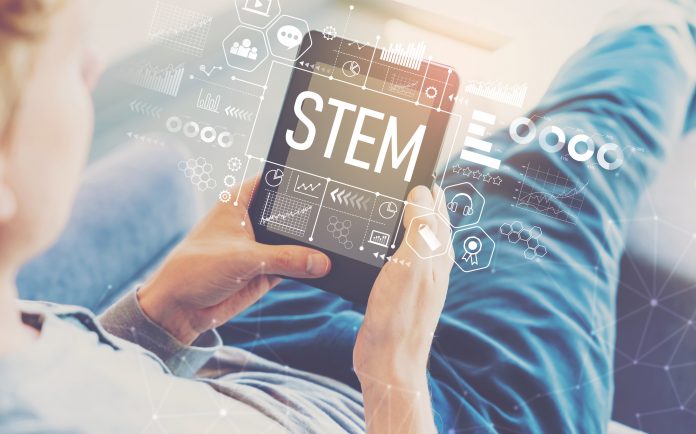Here, we examine the mission of the National Science Foundation’s Directorate of Education and Human Resources to achieve excellence in science, technology, engineering and mathematics education
Within the National Science Foundation (NSF), the Directorate of Education and Human Resources (EHR) has a clear mission for excellence to be achieved when it comes to supporting science, technology, engineering and mathematics (STEM) education in the U.S. The notion here is that this aim applies at all levels and in all settings so that the development of a well-prepared and diverse workforce of scientists, technicians, engineers, mathematicians and educators are supported.
The goals of EHR can be summarised as follows:
- To get the next generation of STEM professionals ready and to retain and more Americans for careers in STEM.
- To encourage a robust research community that can undertake a rigorous evaluation and research that support excellence in STEM education.
- To increase the scientific, technological and quantitative literacy of everybody in the U.S to help them be responsible citizens and live productive lives in today’s technological world.
- To broaden participation and close achievement gaps in all STEM fields.
Capacity-building strategies of EHR include facilitating the translation of research into practice and creating supportive learning environments and STEM pathways by developing models of reform/systemic change at both institutional and multi-institutional levels through partnerships, networking, alliances and collaborations.1
Graduate Education (DGE)
Under EHR, The Division of Graduate Education (DGE) aims for innovative, inclusive, high-quality graduate education in the STEM fields. DGE is in charge of innovative cross-Foundation programmes that directly or indirectly support U.S citizens in their thirst to become the leading engineers and scientists of the future. Certainly, DGE supports research that generates exciting new ideas for graduate education in the years ahead.
An example of their work is the Graduate Research Fellowship Program (GRFP), which directly supports graduate students in the STEM fields and is the oldest federal fellowship program in existence. Another aspect is the NSF Research Traineeship Program (NRT), which sets out to ensure that graduate students in research-based master’s and doctoral degree programmes develop the knowledge, skills and competencies required to pursue STEM careers. One final example to look at here is the CyberCorps: Scholarship for Service (SFS) program and one of the aims here is to increase the number of qualified employees working for federal, state, local and tribal governments in cybersecurity.2
Research on Learning in Formal and Informal Settings (DRL)
Also under EHR, Research on Learning in Formal and Informal Settings (DRL) essentially invests in projects to make STEM learning for all people more effective. Promoting innovative research, development and evaluation of learning and teaching across all STEM disciplines by advancing cutting-edge knowledge and practices in both formal and informal learning settings sums up its mission.
The EHR Core Research (ECR) program of fundamental research in STEM education provides funding in critical research areas that are essential, broad and enduring. On their website, DRL elaborates further about what they do.
“EHR seeks proposals that will help synthesise, build and/or expand research foundations in the following focal areas: STEM learning, STEM learning environments, STEM workforce development and broadening participation in STEM.
“The program supports advances in fundamental research on STEM learning and education by fostering efforts to develop foundational knowledge in STEM learning and learning contexts, both formal and informal, from childhood through adulthood, for all groups and from the earliest developmental stages of life through participation in the workforce, resulting in increased public understanding of science and engineering.”3
STEM achievement gaps
In a major analysis of university faculty and students in STEM, Indiana University social psychologists found out that professors’ beliefs about intelligence play a measurable role in the success of all students, particularly underrepresented minorities taking their first college-level STEM courses.4
“In a university-wide sample, we found that all students – and black, Latino and Native American students in particular – earn significantly higher grades in STEM courses when their professors believe intelligence is a malleable quality that can be developed over time, compared to when their professors believe intelligence is a fixed trait that cannot change very much,” says author Elizabeth Canning, at the IU Bloomington College of Arts and Sciences’ Department of Psychological and Brain Sciences.5
The need for more scientists and engineers
Finally, in other news, the need for more scientists and engineers is highlighted as a persistent issue plaguing industries across the U.S. We learn that a number of initiatives have been created to prioritise STEM in schools to help educators prepare more diverse students and workers for STEM fields. However, these efforts might be falling short when it comes to the representation of people of colour, according to a Researcher at the University of Missouri.6
“People buy into these notions that only certain people can access certain spaces and do certain things,” Morton says. “When somebody tells a black woman that her STEM studies are too ambitious, they are inferring that STEM careers are reserved for people who don’t look like her. However, the women I spoke to were very strong-willed despite these challenges and asserted that they would write their own stories and not buy into other people’s narratives.”7
Closing remarks
The aforementioned examples of news from the STEM field take us back to the earlier point about the mission of the NSF achieve nothing but excellence when it comes to supporting STEM education in the U.S.
References
1 https://www.nsf.gov/dir/index.jsp?org=EHR
2 https://www.nsf.gov/ehr/dge/about.jsp
3 https://www.nsf.gov/ehr/drl/about.jsp
4 https://www.nsf.gov/news/news_summ.jsp?cntn_id=297801&org=DRL&from=news
6 https://www.nsf.gov/news/news_summ.jsp?cntn_id=297554&org=DRL&from=news
Open Access Government











